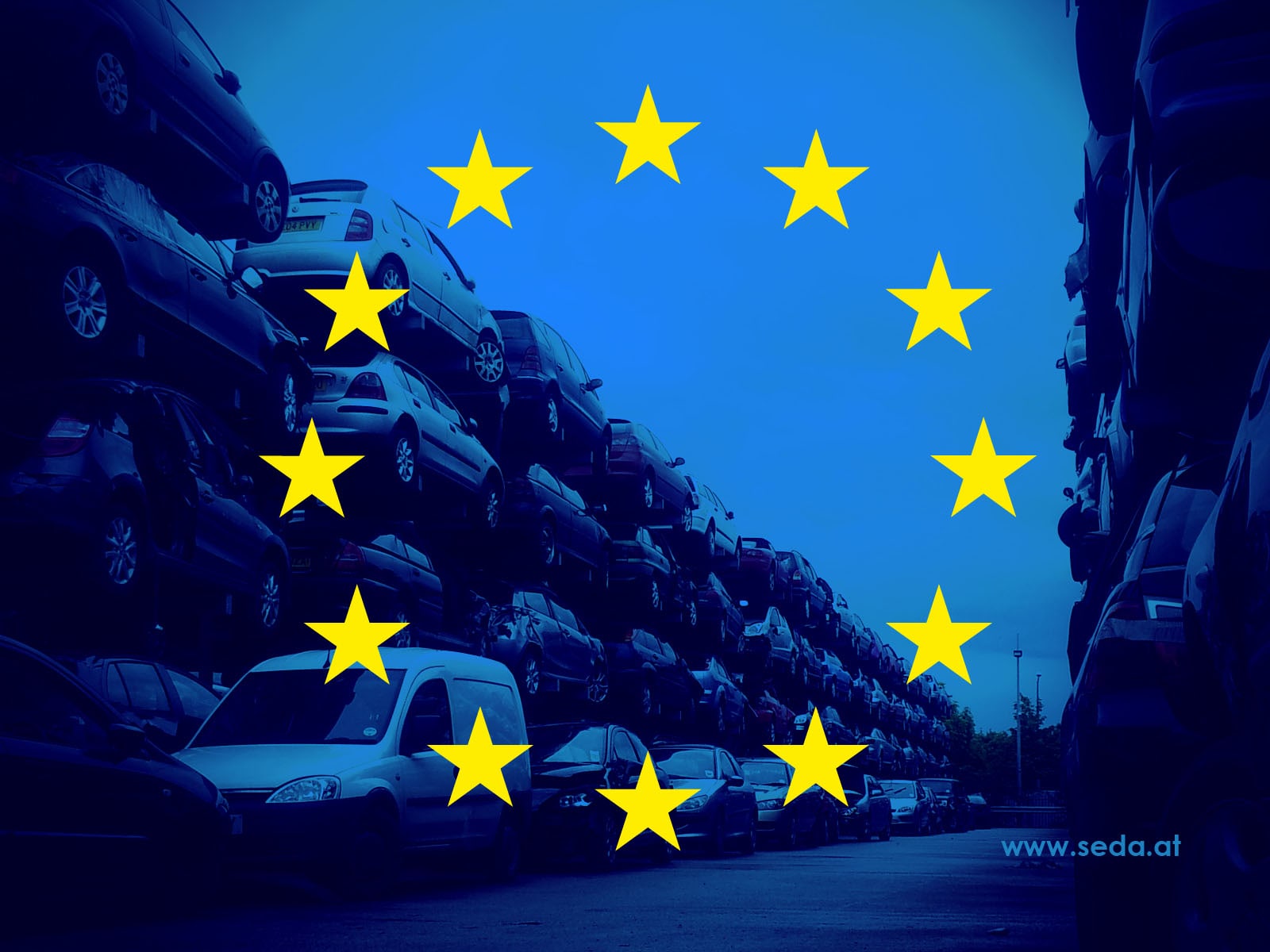End-of-life vehicles (ELV) generate million tonnes of waste in the European Union every year. Directive 2000/53/EC (Directive 2000/53/EC – the “ELV Directive”) on end-of life vehicles aims at making dismantling and recycling of ELVs more environmentally friendly. It sets clear quantified targets for reuse, recycling and recovery of the ELVs and their components. It also pushes producers to manufacture new vehicles without hazardous substances.
Use the links below to get more information or contact us directly (SEDA Team).
Act
Directive 2000/53/EC of the European Parliament and of the Council of 18 September 2000 on end-of-life vehicles
Summary
This Directive applies to vehicles and end-of-life vehicles, including their components and materials. It specifically covers:
- motor vehicles with at least four wheels for transporting passengers and with a maximum of nine seats (category M1);
- motor vehicles with at least four wheels for transporting goods which weigh no more than 3.5 tonnes (category N1); and
- three wheel motor vehicles.
Limit waste production
This Directive aims to decrease the quantity of waste arising from vehicles. It, therefore, encourages vehicle manufacturers and importers of vehicles into the European Union to:
- limit the use of hazardous substances in their new vehicles;
- design and produce vehicles which facilitate re-use and recycling;
- develop the integration of recycled materials.
Since 1 July 2003, the use of mercury, hexavalent chromium, cadmium and lead in the components of vehicles placed on the market has been prohibited. However, these substances may be used for certain applications if the use of these substances is unavoidable (see Annex II to the Directive 2000/53/EEC).
Organise waste collection
Member States shall establish collection systems for waste arising from vehicles. Furthermore, they shall ensure end-of-life vehicles are transferred to authorised treatment facilities.
The owner or holder of the end-of-life vehicle shall receive a certificate of destruction when the vehicle is transferred to an authorised treatment facility. This certificate is issued by the facility. It enables the owner or holder to deregister the vehicle with the public authorities. The costs or part of the costs incurred in transferring a vehicle to a treatment facility shall be met by the vehicle manufacturers.
Organise waste treatment
Member States shall organise the storage and treatment of end-of-life vehicles in accordance with the requirements of the Framework Directive on Waste and those of Annex I to the Directive. Authorised treatment facilities shall strip end-of-life vehicles before treatment and recover all environmentally hazardous components.
Prioritise the re-use and recovery of waste
Priority must be given to the re-use and recovery (recycling, regeneration, etc.) of vehicle components. The aim of this Directive is to increase the rate of re-use and recovery.
The rate of re-use and recovery (in average weight per vehicle and year) should reach:
- 85 % no later than 1 January 2006;
- 95 % no later than 1 January 2015.
The rate of re-use and recycling (in average weight per vehicle per year) should reach:
- 80 % no later than 1 January 2006;
- 85 % no later than 1 January 2015.
For vehicles produced before 1980, the targets are lower.
Facilitate dismantling through information on components and materials
Member States must ensure that producers use material and component coding standards. These standards allow identification of the various materials and components. They, therefore, facilitate dismantling.
The Commission is responsible for establishing European standards. In so doing, the Commission shall take account of the work going on in relevant international forums.
Vehicle manufacturers are required to produce information on dismantling for each type of new vehicle placed on the market. This information must be produced within six months of the vehicle being placed on the market.
Evaluate progress made through implementation reports
Economic operators (producers, distributors, dismantlers, etc.) must publish information on:
- the design of the vehicles and their components (capacity for recovery and recycling);
- the treatment of end-of-life vehicles;
- the development and improvement of methods for re-using, recycling and recovering end-of-life vehicles and their components;
- the progress made in the field of recovery and recycling.
Member States shall submit a report to the Commission every three years based on this information. Each report shall be in the form of a questionnaire drawn up by the Commission. These questionnaires shall enable the Commission to observe any possible changes in the structure of motor vehicle dealing and of the collection, dismantling, shredding, recovery and recycling industries. Within the nine months following receipt of the reports from Member States, the Commission shall publish a report on the implementation of this Directive.
Reference: Link

